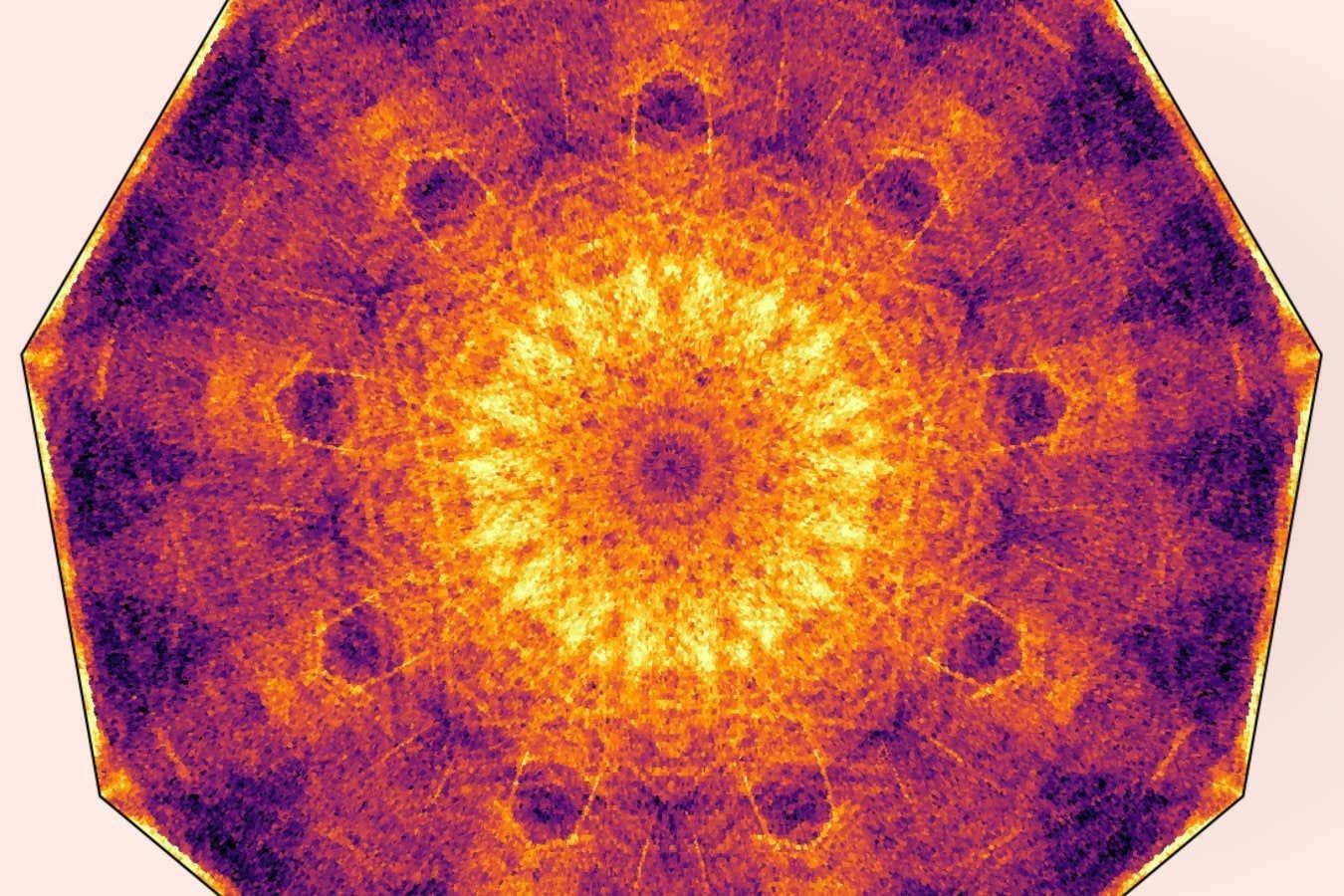A mathematical model of a particle that remembers its past so that it never travels the same path twice produces stunningly complex patterns.
A beautiful and surprisingly complex pattern produced by ‘mathematical billiards’
Albers et al. PRL 2024
In a mathematical version of billiards, particles that avoid retracing their paths get trapped in intricate and hard-to-predict patterns – which might eventually help us understand the complex movement patterns of living organisms.
When searching for food, animals including ants and slime moulds leave chemical trails in their environment, which helps them avoid accidentally retracing their steps. This behaviour is not uncommon in biology, but when Maziyar Jalaal at the University of Amsterdam in the Netherlands and his colleagues modelled it as a simple mathematical problem, they uncovered an unexpected amount of complexity and chaos.
They used the framework of mathematical billiards, where an infinitely small particle bounces between the edges of a polygonal “table” without friction. Additionally, they gave the particle “spatial memory” – if it reached a point where it had already been before, it would reflect off it as if there was a wall there.
The researchers derived equations describing the motion of the particle and then used them to simulate this motion on a computer. They ran over 200 million simulations to see the path the particle would take inside different polygons – like a triangle and a hexagon – over time. Jalaal says that though the model was simple, idealised and deterministic, what they found was extremely intricate.
Within each polygon, the team identified regions where the particle was likely to become trapped after bouncing around for a long time due to its “remembering” its past trajectories, but zooming in on those regions revealed yet more patterns of motion.
“So, the patterns that you see if you keep zooming in, there is no end to them. And they don’t repeat, they’re not like fractals,” says Jalaal.
Katherine Newhall at the University of North Carolina at Chapel Hill says the study is an “interesting mental exercise” but would have to include more detail to accurately represent organisms and objects that have spatial memory in the real world. For instance, she says that a realistic particle would eventually travel in an imperfectly straight line or experience friction, which could radically change or even eradicate the patterns that the researchers found.
For more such insights, log into www.international-maths-challenge.com.
*Credit for article given to Karmela Padavic-Callaghan*


